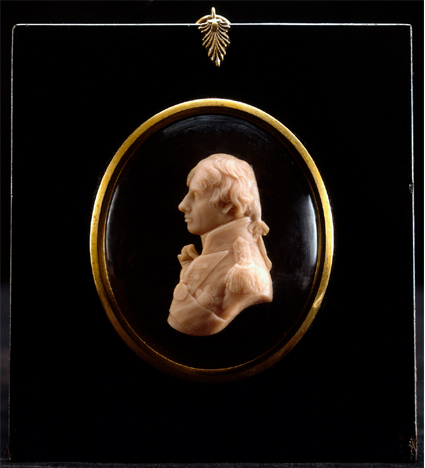To mark the anniversary of the state funeral of Lord Nelson, this week’s work of art is a disconcertingly vivid effigy of him created by the wax modeller Catherine Andras. It was made in 1806, a year after Nelson’s death, and placed on public display in Westminster Abbey, where it is still to be found. The uniform that the figure wears, conspicuously decorated by medals, was furnished by the Nelson family. It includes the shoe buckles that he wore when he was killed, at the Battle of Trafalgar.
Catherine Andras, who was born in 1775, rose from humble origins to be appointed “Modeller in Wax to Queen Charlotte”. Her models, most of which were created on a small scale, “were of coloured wax and most elaborately finished, eyelashes and eyebrows inserted of the finest quality imaginable.” The exceptional commission to make a life-size effigy of Nelson for the Abbey was given to her because she had already modelled a small likeness of him, from life, and so it was thought that she could be counted upon to fashion a more authentically realistic image than someone who had never met him.
Andras was an orphan who had helped to run a toy and perfumery business with her two sisters in Bristol. She made wax dolls on consignment for travelling funfairs, which attracted so much favourable comment and sold so well that she decided to branch out into portraiture. She modelled a number of celebrities, including John Wesley and a colourful Polish military gentleman called General Koscinsko. In the hope of furthering her career she gained an introduction to Robert Bowyer, a successful miniature painter who lived and worked in London. Bowyer and his wife, who had just lost a daughter at the time, were so taken with her that...


